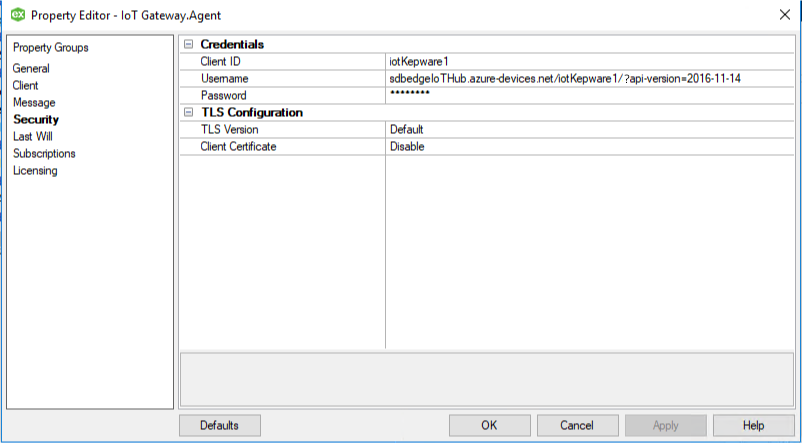

- KEPSERVEREX LINUX UPGRADE
- KEPSERVEREX LINUX SOFTWARE
To view the VxRail Dashboard, select VxRail from the vSphere Client menu. VxRail Manager includes the following functionalities: VxRail Dashboard
KEPSERVEREX LINUX UPGRADE
It is an extension of VMware vCenter, providing information, upgrade automation, adding or removing of nodes, and drive replacement.
KEPSERVEREX LINUX SOFTWARE
It provides the software stack for managing compute, storage, and networking in a VxRail environment. VxRail Manager is a plug-in for VMware vCenter. For more detailed information, see VMware vSphere Documentation. Note : There are other components of vSphere, but they are out of the scope of this document.
VMware vSphere Client -Allows access to connect remotely to vCenter or directly to an ESXi host. vCenter Server -Server management software that provides a centralized platform for controlling vSphere environments. It consists of the following main components: VSphere is VMware’s server virtualization product. The virtualization and software layers of a VxRail system consist of VMware vSphere and vSAN. At least one VM VLAN is configured when the system is initially configured, and others may be defined as required.įor detailed planning that is beyond the scope of this document, see the VxRail Network Planning Guide. Virtual Machine -Users access VMs and the service provided over one or more VM networks. A separate VLAN is used to isolate this traffic. vMotion -VMware vSphere vMotion allows VM mobility between nodes. Low network latency is critical for this traffic, and a specific VLAN isolates this traffic. vSAN -Data access for read and write activity, as well as for optimization and data rebuild, is performed over the vSAN network. Either the default VLAN or a specific management VLAN is used for management traffic. VxRail Management - Management traffic is used to connect to the VxRail Manager plug-in on vCenter, for other management interfaces, and for communication between the management components and the ESXi nodes in the cluster. There are four types of network traffic in a VxRail Cluster: The following figure shows typical network connectivity. Two ToR switches are used for redundancy, but single-switch implementations are also supported. While the customer typically provides the ToR switches, Dell Technologies does offer Ethernet switches for management. For smaller environments, 1 GbE switches may also be used. VxRail networkingĪ typical implementation uses one or more 10 GbE Top-of-Rack (ToR) switches to connect to each node in a VxRail Cluster. For detailed information about hardware, see Bill of Materials. A 10 GbE or 25 GbE Network Daughter Card (10 GbE can autonegotiate to 1 GbE)Ĭonfiguration is highly customizable and designed to meet any HCI requirements. A mirrored pair of BOSS SATA M.2 cards used to boot VMware ESXi on the node. A PCIe SAS disk drive controller supporting 12 GB SAS speeds, if applicable. Up to 48 DDR4 DIMMs, providing memory capacity ranging from 64 GB to 6,144 GB per node, depending on the model. Intel Xeon Scalable Gen 1 and Gen 2 processors, each with up to 28 cores per processor, or a single 2nd Generation AMD EPYC processor with up to 64 cores. Each server node includes the following technology: 
The nodes form a networked cluster with a minimum of two nodes or three nodes for scale-out clusters with a maximum of 64 nodes. The nodes are enclosed in a one-node, single-server system, with each node having one, two, or four multicore processors and either all-flash solid-state disks (SSDs) or a hybrid mix of flash SSDs and hard disk drives (HDDs). Memory capacity ranges from 64 GB to 6,144 GB per node, depending on the model. They are configured with either Intel Xeon or AMD EPYC processors. VxRail hardware consists of Dell EMC PowerEdge servers.

VxRail Manager-Plug-in for VMware vCenter.

The components that make up a VxRail configuration are as follows: The underlying resources are abstracted and pooled together which allows them to be dynamically allocated to applications running in Virtual Machines (VMs) or containers. An HCI system includes, at a minimum, compute, software-defined storage, and virtualized networking and can run on commercial off-the-shelf servers. VxRail is a preconfigured VMware hyperconverged infrastructure (HCI). Please refer to PTC and Apache documentation for software-level HA capabilities. Multiple connection servers do provide redundancy, horizontal scale, and failover aspects. This minimizes the complexity of the solution and allows us to leverage VxRail HA and redundancy aspects. Note : In this solution, we use a single-node PTC ThingWorx deployment, and no PTC connection servers are involved. The following sections describe the architecture components used for the Dell Technologies Manufacturing Edge Reference Architecture with PTC.








 0 kommentar(er)
0 kommentar(er)
